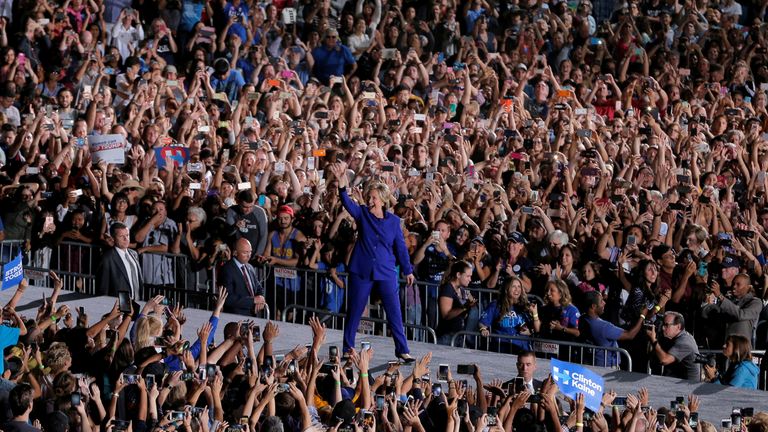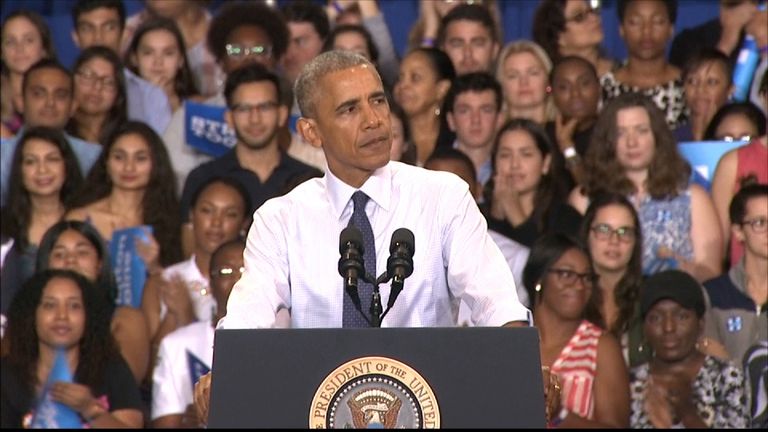How Donald Trump's bid is similar to Brexit campaign
The billionaire has united white, blue-collar workers in traditionally Democratic states with traditional wealthier Republicans.
Friday 4 November 2016 20:20, UK
Donald Trump has fundamentally changed the regular rhythm of American politics in a similar way to the Brexit campaign.
He has referred to himself as 'Mr Brexit' and there is at least one way in which his campaign and this US presidential election in general has parallels with the campaign to leave the European Union.
Both have brought together disparate groups together in a common cause.
It is rare indeed to describe Mr Trump as unifier.
But just as the Leave campaign brought together Conservative-leaning older voters with the Labour-leaning working class, he has united white, blue-collar workers in traditionally Democratic states with traditional wealthier Republicans (or at least those who will hold their nose and vote for him over Hillary Clinton).
Though on the other hand, he has also united an unusual alliance against him.
Just as the Remain campaign brought together younger and wealthier votes into an unusual electoral group, Mrs Clinton is now competitive among college-educated white voters who have long been core Republican voters.
This has the potential to end up with a highly unusual US electoral map and a fundamental change to the make-up of both US parties.
Mr Trump has been pushing hard in traditionally Democratic states with a largely white electorate - the likes of Minnesota, Michigan, Wisconsin, Pennsylvania, Maine and New Hampshire.
In the latter, the polls have shown Mr Trump level pegging in recent days, giving him a feasible path to the White House when added to the states in which he had already been competitive.
And he's been consistently ahead in the polls in Ohio and Iowa - usually swing states which Barack Obama won in 2008 and 2012.
But with a high proportion of white, blue-collar voters, these look among the safer states for Mr Trump this time around.
On the other hand, there have also been recent polls in Georgia showing a close race in a traditionally Republican state whose relatively high proportion of black voters and college-educated white voters looks like putting it up for grabs.
The usually reliably Republican Arizona is now essentially a toss-up, and at one point during the race Mrs Clinton even looked competitive in Texas, which hasn't voted Democrat since 1976.
As with Georgia, both are high in educated white voters who would usually vote Republican but are alienated by Mr Trump, and have an increasingly large proportion of Democrat-leaning ethnic minorities.
We could get an unusual map this year. The normal pecking order has been upturned, with both parties in play for states they would not normally expect to be competing for in a tight race.
And looking into the future, both parties have decisions to make as to the extent to which they play to the anger and resentment of white working class Americans who feel left behind.
And the effect this will have on their vote among the rapidly growing population of ethnic minorities and highly educated voters.
Read more







